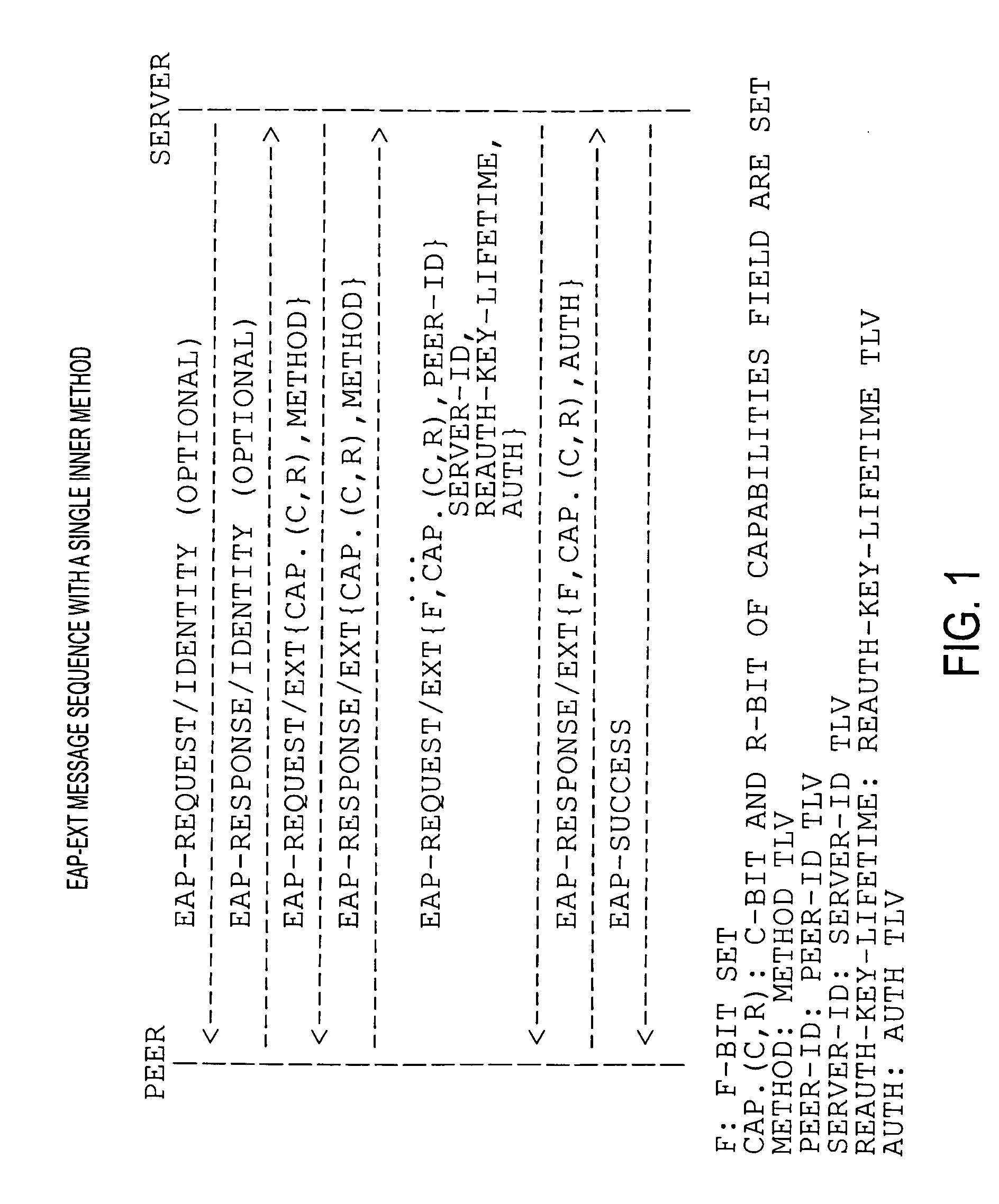Bootstrapping Kerberos from EAP (BKE)
a technology of kerberos and eap, which is applied in the field of eap-based kerberos bootstrapping, can solve the problems of eap not being able to efficiently transport bulk data, routing protocols not being able to properly deliver packets, and kerberos requiring time synchronization between the three parties, so as to achieve the effect of optimizing link-layer handover performan
- Summary
- Abstract
- Description
- Claims
- Application Information
AI Technical Summary
Benefits of technology
Problems solved by technology
Method used
Image
Examples
Embodiment Construction
[0172]While the present invention may be embodied in many different forms, a number of illustrative embodiments are described herein with the understanding that the present disclosure is to be considered as providing examples of the principles of the invention and that such examples are not intended to limit the invention to preferred embodiments described herein and / or illustrated herein.
[0173]According to some preferred embodiments, a system and method for Bootstrapping Kerberos from EAP is provided (referred to herein as BKE). Among other things, in order to support multiple network applications, the preferred embodiments advantageously make Kerberos available from EAP.
[0174]Among other things, the preferred embodiments define, e.g., a new capability within the EAP-EXT method (see background discussion related to EAP-EXT)—including, a new capability bit for Kerberos.
1. Introduction
[0175]Kerberos [RFC4120] is a third-party authentication protocol that provides a means of verifying...
PUM
 Login to View More
Login to View More Abstract
Description
Claims
Application Information
 Login to View More
Login to View More - R&D
- Intellectual Property
- Life Sciences
- Materials
- Tech Scout
- Unparalleled Data Quality
- Higher Quality Content
- 60% Fewer Hallucinations
Browse by: Latest US Patents, China's latest patents, Technical Efficacy Thesaurus, Application Domain, Technology Topic, Popular Technical Reports.
© 2025 PatSnap. All rights reserved.Legal|Privacy policy|Modern Slavery Act Transparency Statement|Sitemap|About US| Contact US: help@patsnap.com



